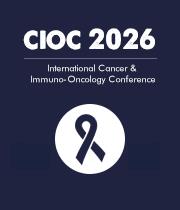Title : Laparoscopic-endoscopic cooperative non-exposed wall-inversion surgery combined with sentinel node navigation surgery in the treatment of early gastric cancer: A multicenter retrospective study
Abstract:
Background: We developed the laparoscopic and endoscopic cooperative surgery (LECS) technique, which combines non-exposed wall-inversion surgery (NEWS) and sentinel node navigation surgery (SNNS) to treat early gastric cancer (EGC). It is a technique which preserves organ function and conforms to the concept of super minimally invasive surgery.
Method: We analyzed the data of patients who underwent NEWS-SNNS in five medical institutions from 2019 to 2024. Patients who survive EGC were divided into two groups according to their choice: those who underwent NEWS-SNNS (N-S group) and those who underwent laparoscopic radical gastrectomy (LRG group). Intra-operation situation, postoperative efficacy, safety indicators, quality of life and prognosis were compared between two groups.
Result: Out of the total 51 patients included, 23 underwent NEWS-SNNS and 28 underwent LRG. No statistically difference was noted in baseline characteristics between two groups (all P>0.05). No difference was noted in operation time, intraoperative blood loss and lymph node positive rate (all P>0.05). The number of lymph nodes dissected in N-S group was less than that in LRG group (P<0.05). Moreover, no difference was noted in the serum levels of immune cells on postoperative day 1, 3, and 7 (all P>0.05) or in the levels of serum C-reactive protein (CRP), procalcitonin (PCT), and interleukin 6 (IL-6; all P>0.05). The time of first feeding, anal exhaust and anal defecation in N-S group were earlier than those in LRG group (P<0.05). The postoperative pain score, total incision length and incision infection rate in N-S group were lower that those in LRG group(all P<0.05). The scores of EORTC QLQ-C30 and EORTC-QLQ-STO22 in N-S group were lower that those in LRG group (P<0.05). No difference was noted in the 2-year PFS rate between two goups (P<0.05).
Conclusions: Compared with the standard LRG, NEWS-SNNS can preserve the function of stomach better. It reduced postoperative rehabilitation time and improve postoperative quality of life.While ensuring the sufficient resection margin and lymph node dissection, patients underwent NEWS-SNNS and LRG can obtain similar prognosis. In order to achieve a radical effect, accurate clinical staging of cancer is required before surgery. Double-tacer technique and frozen section are used for lymph navigation and dissection during surgery.Therefore, NEWS-SNNS is effective and safe to cure early gastric cancer.It is worthy of application.
KEYWORDS: laparoscopic and endoscopic cooperative surgery, non-exposed wall-inversion surgery, sentinel node navigation surgery, early gastric cancer.



